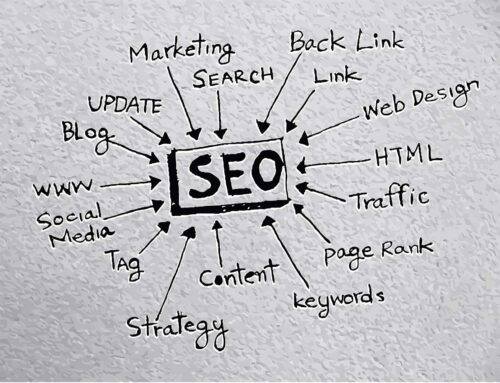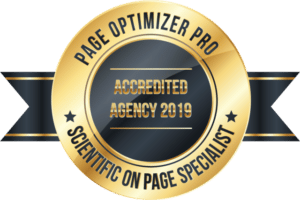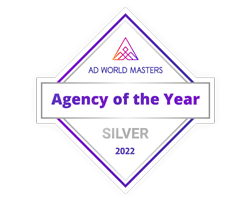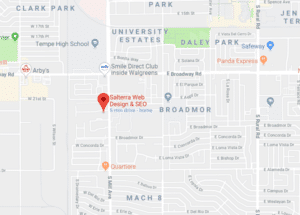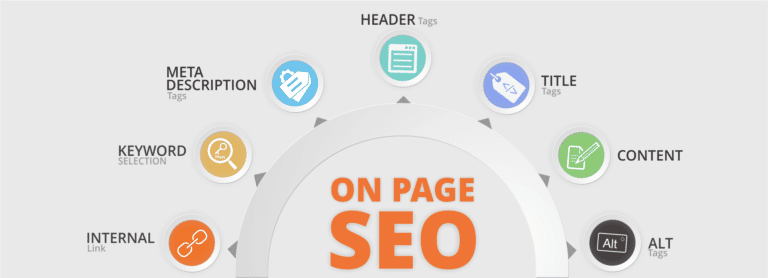
You’re probably wondering, what is on-page SEO? On-page SEO is the practice of optimizing all the elements directly on a website, such as the content and HTML source code of the page, to improve its position in the search engine results and earn more relevant traffic. On-page SEO is beyond helping search engines interpret a webpage’s content. If done correctly, on-page Search Engine Optimization helps site visitors quickly and clearly understand what a webpage is about, if it is relevant to their search query, and if the page is useful and worthy of a high ranking. In this section of our guide, we will cover the most essential components of on-page SEO and how your website’s structure affects both search engines and your users’ experience.
On-Page Optimization
Use SEO-friendly URLs
Google has stated (https://www.stephanspencer.com/matt-cutts-interview/) that the first 3-5 words in a URL are given more weight. So avoid ugly URLs, make your page’s URL short, and include your target keyword.
Avoid ugly URLs: performpress. com/publish date/category/on-page-seo-rocks-i-love-it-so-much
Short and keyword-rich URL: perfrompress. com/on-page-seo
Meta Tags
Possibly the most important aspect of on-page SEO is the use of tags. Meta tags provide search engines and users with information about your site. Including custom meta, tags will help influence visitors and increase your click-through rate.
Start Title Tag with your keyword
A title tag is an HTML element that specifies the title of your webpage or document. Title tags are displayed on SERPs as clickable headlines and are important for usability, SEO, and social media sharing. Your title tag is arguably the most important factor of on-page SEO for national projects. In SERPs they display a snippet of the page you are ranking for, so when writing your title tag, keep it short, clear, and descriptive. The closer the keyword is to the beginning of the title tag, the more weight it may have with search engines.
Add Modifiers to your Title
In SEO, modifiers are words like “2022”, “best”, “SEO”, “guide”, and “review”. Using modifiers will help you rank for variations of your target keyword.
Wrap your title in an H1 Tag
The H1tag is the “headline tag” and should include your target keyword. It is the most important heading because it’s the highest level tag that shows on search engines, and shows what your page is about. Search engines tend to give this tag more weight, so it will typically improve your search engine ranking if used correctly.
What about H2 Tags, are they important?
Simply put, yes. Unlike the H1 tag, you might have multiple subheadings, like H3, H4, H5, and H6 subheadings. You should think of these tags as ways to keep your content organized for site visitors more than search engines. These headings should also still contain keywords.
Striking Multimedia
Multimedia will help you gain a boost with user interaction and as long as it’s relevant, we think it makes content straight-up better. Engaging images, videos, and info-graphics can increase the time spent on your site and reduce the bounce rate. Both of these are critical in ranking user interaction.
Target Keyword in the first 100 words
The keyword you are trying to rank for should appear in roughly the first 100-150 words of your article. This is something that you probably already do naturally but a common mistake is starting off an article with a long, bogged-down introduction. Just be sure to drop your keyword somewhere within in the first 100 words.
Site Speed
Speed is essential– the faster your site loads, the more user engagement you will receive and keep. Nearly half of all users will leave a site if it doesn’t load within 3-4 seconds. You can boost site speed by using a CDN or compressing images, but investing in a faster host provider is the best thing you can do to increase site speed.
Internal Links and Outbound Links
Links certainly carry the most weight in SEO. Outbound links from quality sources and authoritative sites will strengthen your domain while linking internally throughout your site enhances the user’s experience and your SEO. Linking internally helps improve the crawlability of your site by putting the most important pages in the spotlight for search engines. The major benefit of internal linking is providing your visitors more reasons to stay on your site.
Image Optimization
We’ve mentioned that engaging images is beneficial to the user’s experience but you can also boost your SEO strategy by optimizing images. Make sure that the image file name includes your target keyword and that the keyword is also part of your alt text. The title should be unique but also applicable to the image’s content. Why is the alt tag valuable? If your page doesn’t load the image, the alt tag is all that’s left for the reader to see. The image and the alt text should both be an accurate reflection of the article’s topic. Remember that site speed is still important, so be sure to scale the image to an appropriate size, a large image will decrease the page’s load time.
Authoritative Content
Content is king. As search engines crawl your site, your content should clearly explain what it is your offering. When writing content it should be engaging and entice your reader further, and want to stay on your site. Content should always be clutter-free, unique, and well-written without any spelling or grammatical errors.
Schema
Schema markup is code (semantic vocabulary) that you put on your website to help the search engines return more informative results for users. If you’ve ever used rich snippets, you’ll understand exactly what schema markup is all about. Here’s an example of Salterra’s Schema that increases conversions of search results.
Perfectly Optimized
From the appearance of your site to the technical aspects, you should strive for your website to be flawless. By implementing these on-page SEO strategies you are already creating a better experience for your users, which means you are well on your way to generating better conversions! Remember, the perfectly optimized page boosts the health of your entire site and your internet marketing strategy!
About Salterra Digital Services
Salterra was started in 2011 by Terry and Elisabeth Samuels; nothing fancy and nothing pretentious. Quality work at a fair price. Starting with a web design focus, they both quickly learned that while having an amazing website to highlight your business is a great start, marketing is intrinsically foundational for our clients. When several clients were not seeing results through the search efforts of other companies, Terry took it to the next level. While digging into SEO and marketing, he found something he was very passionate about. His inner geek pushed him to focus solely on the data and analytics side of the business while Elisabeth built on her creative and visual strength and expanded the design side. In the industry, it is not always common to have both designers and digital marketing so closely connected, but to them it made perfect sense. Salterra’s World Headquarters is in Tempe Arizona
Terry and Elisabeth are the Hosts of Roundtable SEO Mastermind Series and SEO Spring Training Conference.

